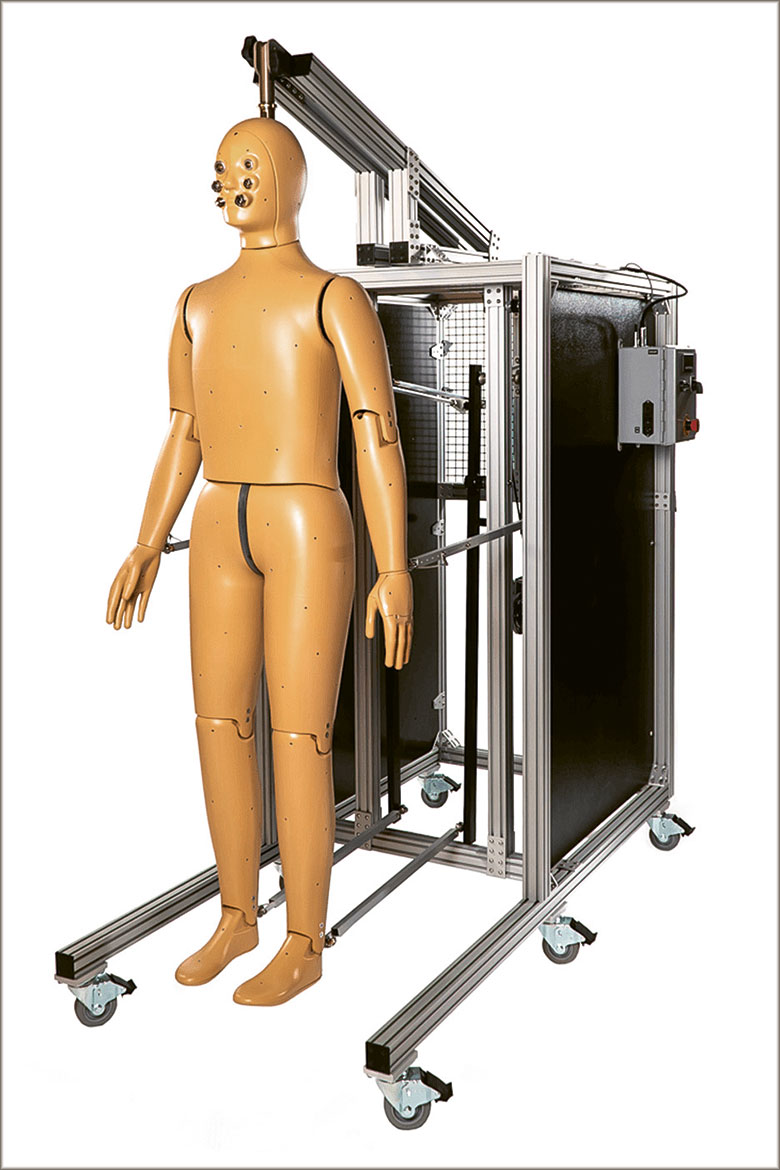Indoor climate
When the dummy sweats or freezes
Some of us always like to have the office windows wide open, while others would rather wrap up nice and warm. Two humanoid high-tech dummies are now helping researchers to find the most economical solution for everyone.

ANDI is an ingenious test dummy whose micropores mean he can even break out in a sweat. | Photo: Therme metrics
It keeps us cool in summer and warm in the winter – air conditioning has become an indispensable part of our everyday lives. But however reliably it hums, it rarely meets everyone’s expectations. It makes some shiver, while others would dearly like things even cooler.
Providing air conditioning for everyone often satisfies no one, but it still consumes immense amounts of energy. According to the International Energy Agency, air conditioning systems are driving up the world’s demand for electricity. And because electricity is predominantly generated by fossil fuels across the world, it puts us in a vicious circle: more heat means there’s a greater demand for cooling and thus for more electricity, and that in turn generates more emissions.
Agnes Psikuta is a researcher at the Swiss Federal Laboratories for Materials Science and Technology (Empa), and she’s working to solve this. “We want to cool buildings less in summer and heat them less in winter. To achieve this, we’re equipping workplaces with individual solutions – providing a kind of microclimate for everyone”, she says. “This will heighten the individual comfort of employees and at the same time save up to 60 percent of a building’s energy”.
1.8 metres, 35 kg and 114 pores
Heatable seat cushions, infrared panels at table height, warming foot mats, mini-fans for hands and face: there are all kinds of possible solutions for individual well-being. But what combination of them could reduce energy consumption and increase people’s degree of comfort?
This is what Psikuta wants to find out. To this end, she’s resorting to research infrastructure that was only established in late 2024. The Swiss Manikin Research Center basically comprises two high-tech dummies called ANDI and HVAC. These two mannequins are the most advanced in their field. They were built by a US company entirely in line with Psikuta’s demands. “Their sensors and capabilities were unique when we ordered them”, she says. In other words, no comparable test dummies existed at the time, and they had to undergo further development until they met all specifications perfectly.
ANDI stands at just under 1.8 metres, weighs 35 kg and has 35 body zones that he can heat and also cool down (which is an all-time first among test dummies). His cooling system kicks in when his skin temperature rises. This allows heat loss and heat absorption to be quantified. And because ANDI can even sweat through 144 micro-pores, he’s able to simulate the thermal reactions of the human body. He also has a finely meshed network of heat-flow sensors that enables him to measure whether any energy is being released or absorbed at any part of his body – and if so, how much.
ANDI’s partner is called HVAC (Heating, Ventilation, Air Conditioning). He’s a bit smaller and doesn’t weigh as much but has 46 combinations of sensors to measure air flow, temperature, relative humidity and short-wave and long-wave radiation at every point on his body. He can therefore measure all climatic influences that might act upon him, e.g., how much heat is generated by a radiator, and how much by the sun when it shines through the window.
“For the first-ever time, we’re able to measure exactly how much heat is transferred by radiation and how much by air flow”, says Dolaana Khovalyg. She’s an assistant professor at EPFL, is the project manager, and is working closely with Psikuta. “HVAC shows us what comes from outside, and ANDI shows us how the body reacts to it”.
Using the combined data from both dummies, the researchers are now testing every conceivable combination to determine optimum comfort: heated seats versus mini air jets, infrared panels versus foot mats. In this way, the high-tech dummies are helping to set up a scientifically sound basis on which to develop both new norms for well-being, and truly energy-efficient climate control systems.
Khovalyg says: “At the end of our project, we’ll have guidelines with recommendations for every climate zone and every type of building”. Their aim is to ensure that the office of tomorrow consumes less energy than today – but without anyone in it freezing from the cold or sweating from the heat.



